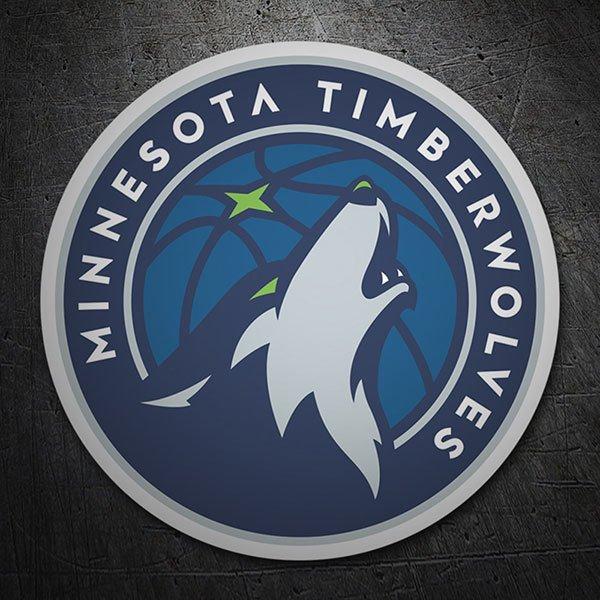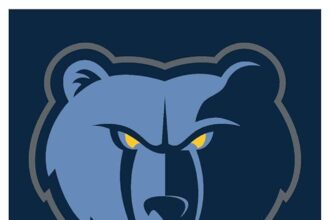The Minnesota Timberwolves have carved out a distinct place in the NBA landscape since their inception in 1989. As a franchise rooted in the vibrant basketball culture of the Twin Cities, the Timberwolves’ journey reflects both the challenges and triumphs of building a competitive team in a fiercely contested league. This article delves into the rich history of the Timberwolves, highlighting key moments, notable players, and their impact on the broader world of professional basketball. From early struggles to playoff breakthroughs, the Timberwolves’ story is a compelling chapter in the evolving narrative of the NBA.
Minnesota Timberwolves Team Evolution and Key Milestones
The Minnesota Timberwolves entered the NBA landscape in 1989 as an expansion team, setting the foundation for a franchise that would experience both growing pains and moments of brilliance. From their early years marked by struggles to find a consistent identity, the Timberwolves steadily evolved through strategic drafts and pivotal trades. The arrival of Kevin Garnett in 1995 marked a transformative era, as the franchise gained its first true superstar and playoff contender. Under Garnett’s leadership, Minnesota made its inaugural playoff appearance in 1997 and reached the Western Conference Finals in 2004 – a milestone that highlighted the team’s potential to compete among the NBA elite.
Since those landmark years, the Timberwolves have continued to reshape their roster and vision, embracing a future-oriented rebuild aimed at cultivating young talent. Key milestones include the drafting of Karl-Anthony Towns in 2015, signaling a new era of promise, and the acquisition of dynamic players who have brought renewed energy to the Target Center. The team’s evolution is also reflected in its community engagement and efforts to create a resilient, competitive culture. Below is a snapshot of some of the franchise’s defining moments:
| Year | Milestone |
|---|---|
| 1989 | Team Established as 26th NBA Franchise |
| 1995 | Drafted Kevin Garnett, Franchise’s First Superstar |
| 2004 | Reached Western Conference Finals |
| 2015 | Drafted Karl-Anthony Towns |
| 2021 | Secured Playoff Spot After 14 Years |
In-Depth Analysis of Franchise Performance and Strategic Moves
The Minnesota Timberwolves have experienced a dynamic journey marked by fluctuating success and pivotal strategic decisions. Since their inception in 1989, the franchise has worked tirelessly to establish itself as a competitive force within the NBA. Key performance metrics underscore periods of growth, such as the surge during the early 2000s led by powerhouse Kevin Garnett. However, inconsistent playoff appearances highlighted the challenges of maintaining long-term success. The team’s management has focused heavily on drafting and developing young talent, underscoring a rebuild strategy that seeks sustainable growth rather than quick fixes.
Significant strategic moves in recent years include high-profile trades and coaching changes aimed at accelerating the Timberwolves’ competitive edge. The acquisition of star players combined with investments in analytics and sports science reflects a shift towards a more data-driven approach. Some notable decisions are:
- Drafting Karl-Anthony Towns (2015) – A cornerstone for franchise rebuilding efforts.
- Hiring Chris Finch (2021) – Implementing a fresh coaching philosophy focused on offensive versatility.
- Strategic trades to improve defensive capabilities and bench depth.
| Season | Win-Loss Record | Playoff Result | Key Move |
|---|---|---|---|
| 2017-18 | 47-35 | First Round Exit | Drafted Josh Okogie |
| 2020-21 | 23-49 | Missed Playoffs | Coaching Change to Chris Finch |
| 2022-23 | 42-40 | Playoff Appearance | Trade for Rudy Gobert |
Spotlight on Legendary Players Shaping Timberwolves Legacy
The Minnesota Timberwolves’ history is punctuated by the remarkable contributions of iconic athletes whose talents have not only elevated the franchise but also left an indelible mark on the NBA landscape. At the forefront stands Kevin Garnett, whose dynamic versatility and fierce competitiveness revolutionized the team’s identity throughout the late 1990s and 2000s. As an NBA MVP and multiple-time All-Star, Garnett’s impact extended beyond statistics; his leadership helped position Minnesota as a legitimate contender during his tenure. Alongside him, players like Kevin Love and Wally Szczerbiak delivered explosive offensive performances that kept Timberwolves fans on their feet and showcased the team’s evolving playing style.
Other notable figures include defensive stalwarts and emerging stars who have carried the torch of excellence into the modern era. The following table highlights some of the franchise’s standout players with their key career statistics and accolades, illustrating the rich fabric of talent that has sculpted the Timberwolves’ legacy:
| Player | Years Active | Points Per Game (PPG) | All-Star Appearances | Notable Achievements |
|---|---|---|---|---|
| Kevin Garnett | 1995-2007, 2015-2016 | 17.8 | 15 | NBA MVP (2004), Defensive Player of the Year (2008) |
| Kevin Love | 2008-2014 | 20.2 | 5 | NBA Champion (2016), All-NBA Team selections |
| Wally Szczerbiak | 1999-2006 | 14.0 | 1 | Three-Point Leader (2005) |
| Ricky Rubio | 2011-2017, 2021-present | 11.0 | 1 | All-Time Franchise Assist Leader |
| Player | Years Active | Points Per Game (PPG) | All-Star Appearances | Notable Achievements |
|---|---|---|---|---|
| Kevin Garnett | 1995-2007, 2015-2016 | 17.8 | 15 | NBA MVP (2004), Defensive Player of the Year (2008) |
| Kevin Love | 2008-2014 | 20.2 | 5 | NBA Champion (2016), All-NBA Team selections |
| Wally Szczerbiak | 1999-2006 | 14.0 | 1 | Three-Point Leader (2005) |
| Ricky Rubio | 2011-2017, 2021-present | 11.0 | 1 |














